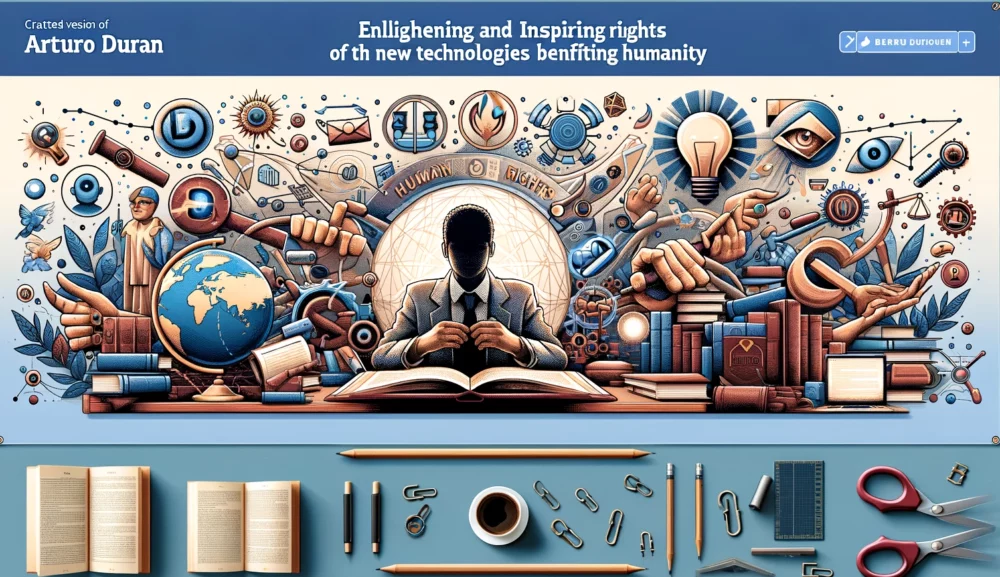“La Dictadura de las Minorías en Plena Democracia” representa un desafío importante para el funcionamiento de las democracias en todo el mundo. La polarización política ha llevado a una situación en la que las elecciones se deciden por estrechos márgenes, con las minorías como árbitros decisivos.
Para preservar y fortalecer la democracia, es fundamental fomentar la participación ciudadana, promover la responsabilidad de los líderes políticos y buscar soluciones que reflejen los intereses de toda la sociedad. Solo a través de un esfuerzo conjunto y una mayor comprensión mutua podemos superar esta dicotomía y avanzar hacia un sistema político más inclusivo y representativo.
En las últimas décadas, el panorama político mundial ha sido testigo de una creciente polarización entre las ideologías de izquierda y derecha. En muchos países, esta división ha llevado a una situación peculiar, donde ambos extremos obtienen aproximadamente el 45% del apoyo electoral, mientras que una minoría fluctuante, con poder de voto, se convierte en el factor decisivo en las elecciones. Este fenómeno ha sido denominado “La Dictadura de las Minorías en Plena Democracia”. En este artículo, exploraremos cómo esta polarización política ha afectado al proceso electoral global y qué implicaciones tiene para la estabilidad democrática.
¿Cómo se llegó a esta situación?
Para entender el fenómeno de “La Dictadura de las Minorías”, es importante analizar los factores que contribuyeron a la creciente polarización en el panorama político. Entre ellos, podemos mencionar el surgimiento de problemas sociales y económicos complejos, la aparición de líderes políticos carismáticos que abanderan posturas extremas, y la polarización mediática que ha llevado a una fragmentación de la información. Estos elementos han contribuido a que el electorado se agrupe en torno a los polos ideológicos, dejando a las minorías como los árbitros decisivos en el proceso electoral.
El papel de las minorías en el proceso electoral
Con el 45% del apoyo electoral para ambos lados, las minorías, que a menudo representan segmentos más moderados del electorado o tienen afinidad con terceras opciones, se convierten en el segmento que inclina la balanza hacia un lado u otro. Esta situación puede dar lugar a una tensa competencia por el apoyo de estas minorías, llevando a los partidos políticos a adaptar sus plataformas y discursos para atraer a estos votantes clave.
Implicaciones para la gobernabilidad y la toma de decisiones
Cuando las elecciones se deciden por estrechos margenes, la gobernabilidad puede verse comprometida. Gobernar en un ambiente altamente polarizado puede dificultar la adopción de políticas efectivas, ya que los partidos políticos pueden enfrentar dificultades para alcanzar consensos y trabajar en conjunto. Esto puede dar lugar a bloqueos políticos y a una toma de decisiones ineficiente.
El papel de la participación ciudadana
En una democracia, es esencial que todos los ciudadanos participen activamente en el proceso electoral. La falta de participación puede fortalecer la influencia de las minorías en detrimento de la voluntad general del pueblo. Fomentar la educación cívica y la participación política informada es fundamental para que la democracia funcione de manera más representativa y justa.
El papel de la responsabilidad de los líderes políticos
En un sistema democrático, los líderes políticos tienen la responsabilidad de buscar soluciones que beneficien al conjunto de la sociedad y no solo a las minorías que los llevaron al poder. La búsqueda de consensos y el compromiso son fundamentales para superar la polarización y avanzar hacia políticas inclusivas y sostenibles.
“La Dictadura de las Minorías en Plena Democracia” representa un desafío importante para el funcionamiento de las democracias en todo el mundo. La polarización política ha llevado a una situación en la que las elecciones se deciden por estrechos márgenes, con las minorías como árbitros decisivos. Para preservar y fortalecer la democracia, es fundamental fomentar la participación ciudadana, promover la responsabilidad de los líderes políticos y buscar soluciones que reflejen los intereses de toda la sociedad. Solo a través de un esfuerzo conjunto y una mayor comprensión mutua podemos superar esta dicotomía y avanzar hacia un sistema político más inclusivo y representativo.
